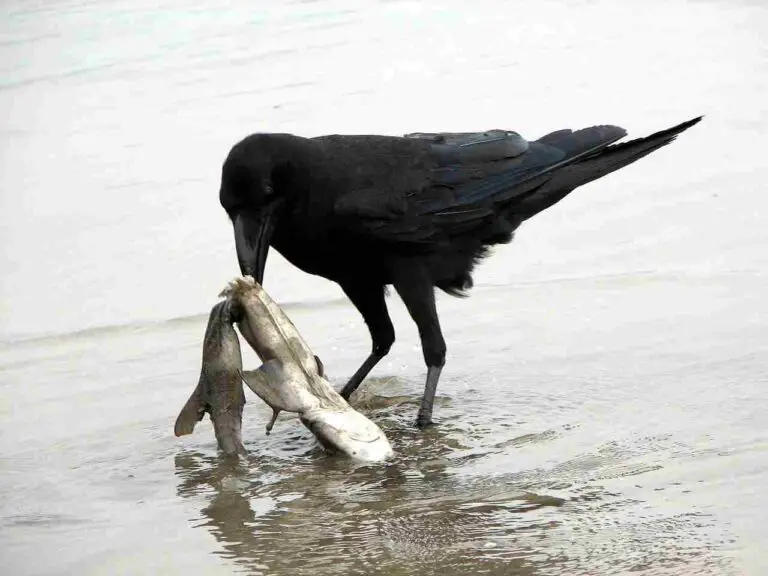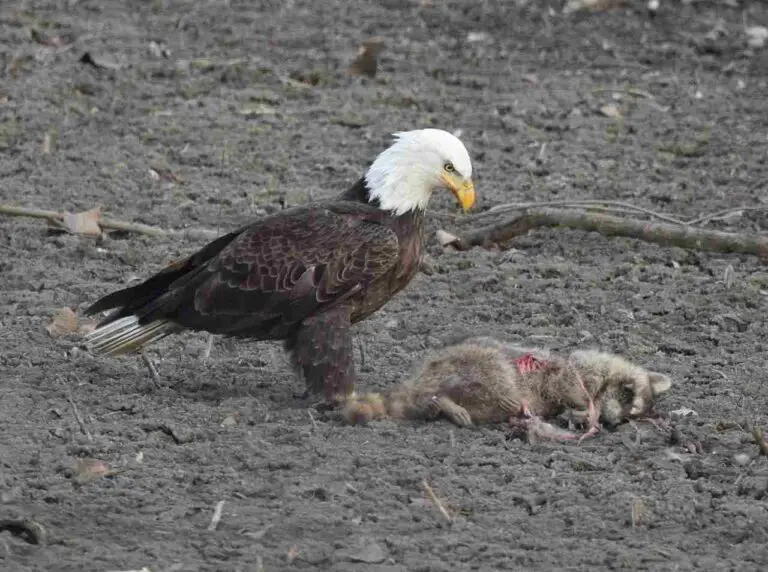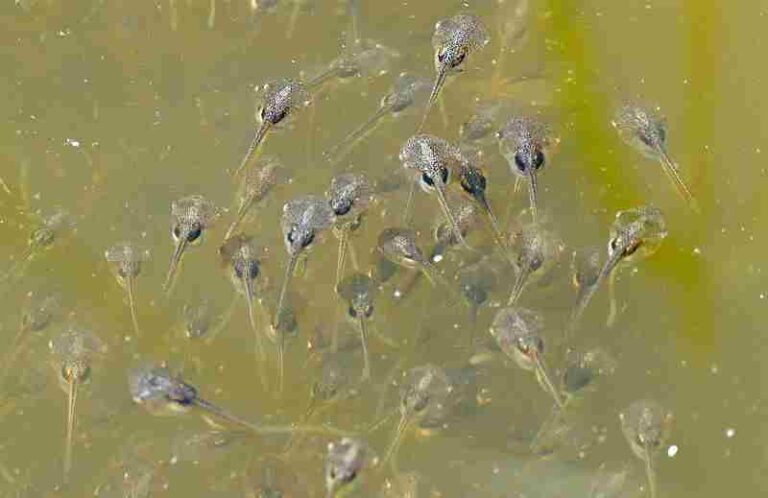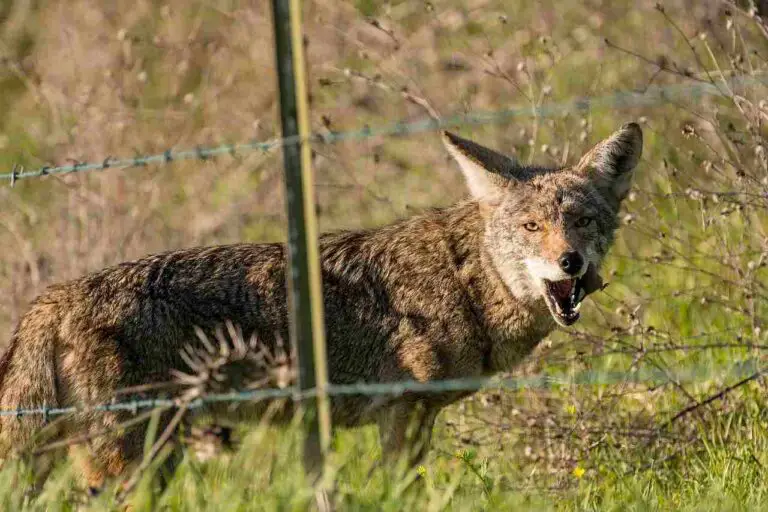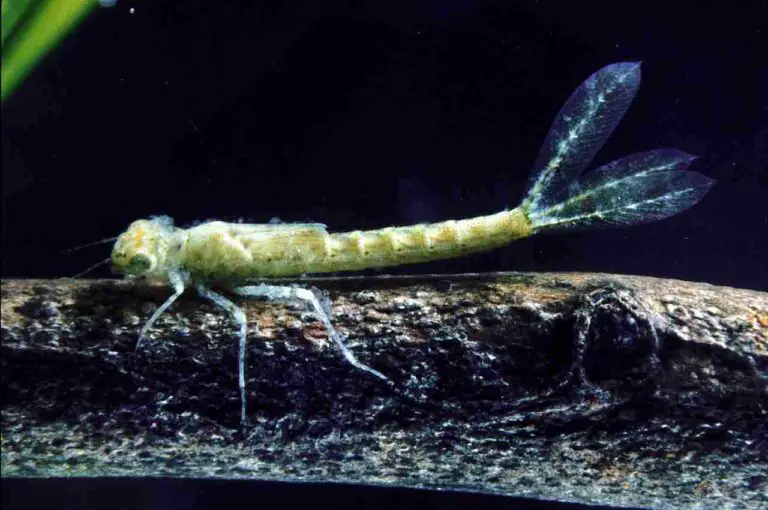Do Coyotes Eat Deer? What Coyotes Eat Revealed
Coyotes do eat deer, although smaller mammals are their primary prey. However, they do target deer fawns or sick and injured adult deer. Coyotes also scavenge on deer carcasses. The consumption of deer by coyotes is relatively common, especially when certain conditions are met.
These conditions include a rapid growth in the deer population, scarcity of preferred small prey, small territorial coverage, and general behavioral changes. When these factors align, coyotes are more likely to hunt and kill deer. Despite their preference for smaller prey, coyotes have been known to take advantage of deer as a food source.
Conditions On Which Coyotes Eat Deer
1). Rapid Growth of Deer Population
When the deer population experiences a rapid growth, it can lead to an increase in the number of coyotes eating deer. This occurs due to the availability of a larger prey base for the coyotes. As the deer population expands, there is a greater abundance of potential food sources for the coyotes, making it easier for them to hunt and capture deer. This phenomenon is particularly evident in areas where the deer population is not effectively managed or controlled.
The rapid growth of the deer population provides an opportunity for coyotes to fulfill their dietary needs by preying on deer. This natural predator-prey relationship helps to maintain a balance in the ecosystem. However, it is important to note that the rapid growth of the deer population alone is not the sole factor determining whether coyotes will eat deer. Other conditions, such as the scarcity of preferred small prey and the territorial coverage of coyotes, also play a significant role in their hunting behavior.
2). Scarcity of Preferred Small Prey
During certain seasons, such as winter, there may be a scarcity of preferred small prey for coyotes. This scarcity can lead to a shift in their hunting behavior, causing them to target larger prey like deer. When their usual sources of food, such as rabbits or rodents, become scarce, coyotes adapt by seeking out alternative food sources to survive. In these situations, deer become a more attractive option for coyotes due to their larger size and availability.
The scarcity of preferred small prey forces coyotes to expand their dietary options, and deer become a viable alternative. This change in hunting behavior is driven by the need to find enough food to sustain themselves during times of scarcity. While coyotes are opportunistic hunters and will eat a variety of prey, including small mammals, birds, and insects, the scarcity of their preferred small prey can push them to target larger animals like deer.
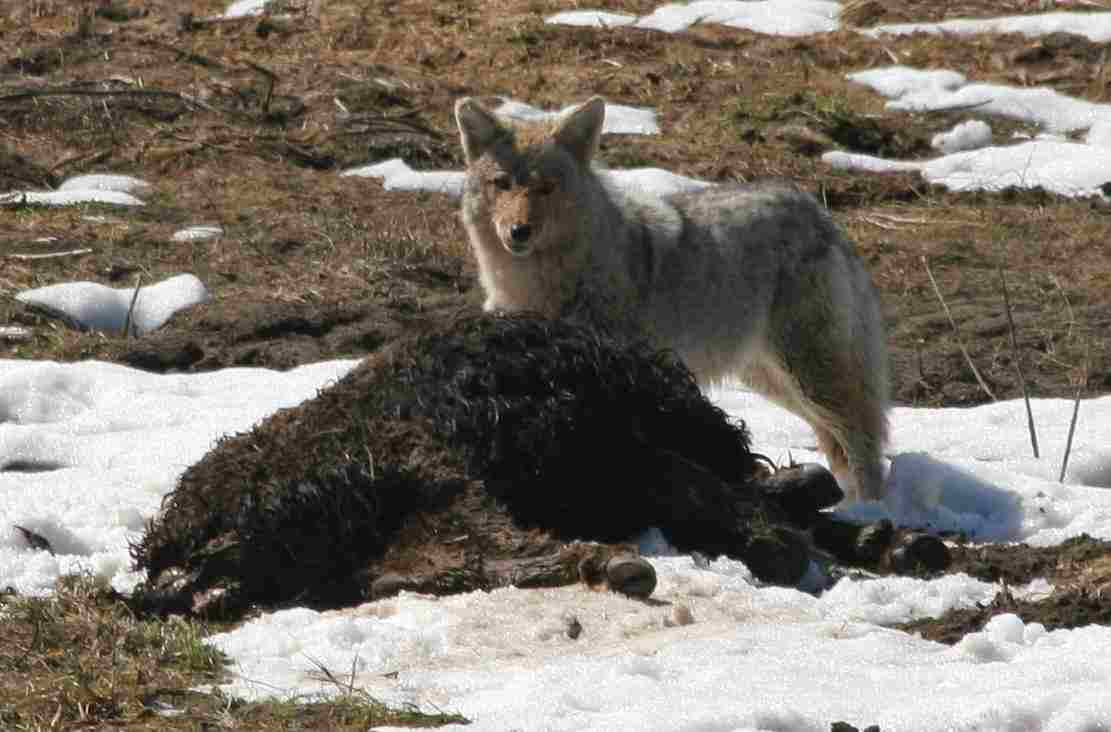
3). Small Territorial Coverage
Coyotes are territorial animals, and their hunting grounds are limited by the size of their territory. When coyotes have small territorial coverage, it can force them to seek larger prey since they have limited space for hunting. This limited space means that their usual sources of food, such as rabbits or rodents, may not be abundant enough to sustain them. As a result, coyotes may turn to larger prey like deer to meet their nutritional needs.
The small territorial coverage of coyotes can lead to a shift in their hunting behavior, making deer a more attractive option. With limited space to hunt, coyotes need to find enough food within their territory to survive. When their preferred small prey is scarce, they may have no choice but to target larger animals like deer.
Coyotes are opportunistic hunters and will eat a variety of prey, but their territorial limitations can push them towards larger prey when their usual sources of food are not readily available. Deer, with their larger size and availability, become a viable alternative for coyotes in these situations.
To reiterate, the small territorial coverage of coyotes can force them to seek larger prey, including deer, as they have limited space for hunting. When their usual sources of food are scarce within their territory, coyotes adapt their hunting behavior to ensure their survival. By targeting larger animals like deer, coyotes can meet their nutritional needs and sustain themselves in environments with limited hunting grounds.
4). General Behavioral Change
Coyotes are known for their adaptability and flexibility when it comes to hunting and finding food. One factor that can contribute to coyotes eating deer is a general behavioral change in their hunting patterns. When coyotes have limited access to their preferred small prey, they may shift their focus towards larger animals like deer.
In environments where coyotes have a preference for larger prey, such as areas with a high deer population, they may actively seek out deer as a food source. This behavioral change can be influenced by various factors, including the availability of deer within their territory and the abundance of their usual small prey.
Coyotes are opportunistic hunters, and their hunting strategies can vary depending on the circumstances. While they primarily hunt smaller animals like rodents, the scarcity of their preferred small prey can prompt them to target larger animals like deer. This shift in behavior allows coyotes to adapt to their changing environment and ensure their survival.
It’s important to note that coyotes do not exclusively rely on deer as a food source. They have a diverse diet and will consume a variety of prey, including small mammals, birds, and even fruits and vegetables. However, when conditions align and their usual sources of food are limited, coyotes may take advantage of the opportunity to hunt and eat deer.
Do Coyotes Hunt Deer?
Yes, coyotes do hunt deer, but it is not their primary prey. Coyotes are known to be opportunistic hunters and will target a variety of animals depending on the circumstances. While they typically focus on smaller prey like rodents, coyotes have been observed hunting and taking down larger animals such as deer, moose, and elk.
When coyotes hunt deer, they often employ a cooperative hunting strategy. They work together in packs to increase their chances of success. This can involve surrounding the deer and using their speed and agility to tire it out before making a final attack. However, it’s important to note that not all coyotes will engage in hunting deer, and it is more common for larger coyotes to do so consistently.
It’s worth mentioning that coyotes are more likely to target sick, injured, or trapped deer opportunistically. They are skilled at identifying vulnerable prey and will take advantage of any opportunity that presents itself. However, hunting deer is not their primary focus, and they will generally prioritize smaller animals for their food source.
Do Coyotes Kill Deer?
Yes, coyotes can and do kill deer, but it is not their primary prey. While larger coyotes are more likely to hunt and kill healthy adult deer consistently, it is important to note that not all coyotes will engage in this behavior. Coyotes are opportunistic hunters and will target a variety of animals depending on the circumstances.
When it comes to deer, coyotes often target sick, injured, or trapped individuals opportunistically. They have a keen ability to identify vulnerable prey and will take advantage of any opportunity that presents itself. However, hunting deer is not their main focus, and they will generally prioritize smaller animals for their food source.
Coyotes that do hunt and kill deer often employ a cooperative hunting strategy. They may work together in packs to increase their chances of success. This can involve surrounding the deer and using their speed and agility to tire it out before making a final attack.
Will a Coyote Eat a Dog?
Yes, coyotes have been known to eat dogs, especially if the dog is small, such as a puppy or a smaller breed. However, it is important to note that coyotes do not naturally target dogs as their primary prey. They are opportunistic hunters and will only go after vulnerable dogs, such as those that are sick or injured.
Coyotes are generally cautious and will avoid confrontations with larger dogs. They are aware of the potential risks involved in attacking a larger animal and will prioritize their own safety. Therefore, it is unlikely that a coyote would go after a large dog unless it is already in a weakened state.
When it comes to smaller dogs, coyotes may see them as potential prey. Small dogs are more vulnerable and easier for a coyote to overpower. It is important for dog owners to be aware of this potential threat, especially in areas where coyotes are known to be present.
To protect your dog from coyote attacks, it is recommended to keep them on a leash when outside, especially during dawn and dusk when coyotes are most active. Additionally, securing your property with a fence can help prevent coyotes from entering your yard and potentially harming your dog.
If you live in an area with a high coyote population, it is also important to be mindful of your dog’s behavior and health. Keeping your dog healthy and strong can reduce the likelihood of it being targeted by a coyote. Regular veterinary check-ups and prompt treatment of any injuries or illnesses can help ensure your dog’s well-being.
What Do Coyotes Eat in the Wild?
Coyotes in the wild have a varied diet that consists of both animal and plant matter. Their primary food sources include mice, rabbits, and squirrels, which they hunt and capture with their sharp teeth and strong jaws. In addition to small mammals, coyotes also consume insects such as beetles, termites, crickets, and grasshoppers. These insects provide a good source of protein for the coyotes.
While coyotes prefer a carnivorous diet, they are adaptable and will eat other materials as a supplement if their carnivorous diet is insufficient or if their preferred prey is unavailable. This can include plant matter like fruits, which they may find in their habitat. This flexibility in their diet allows coyotes to survive in a variety of environments and adapt to changing conditions.
It is important to note that coyotes are opportunistic hunters and scavengers. They will take advantage of any available food source, including carrion and garbage. This adaptability is one of the reasons why coyotes have been able to thrive in a wide range of habitats, from forests to deserts.
What Do Desert Coyotes Eat?
Desert coyotes have a diverse diet that includes mesquite peas, cactus fruit, succulent foliage, insects, lizards, snakes, jackrabbits, and occasionally birds. They are adaptable and can survive in harsh desert conditions by consuming a variety of food sources.
In the arid and unforgiving desert environment, food can be scarce and unpredictable. Desert coyotes have evolved to take advantage of the resources available to them, allowing them to thrive in these challenging conditions. One of the primary food sources for desert coyotes is mesquite peas. These small legumes provide a good source of protein and nutrients, helping the coyotes to maintain their energy levels in the harsh desert environment.
Cactus fruit is another important part of the desert coyote’s diet. These fruits are rich in water content, which is crucial for survival in the arid desert. The coyotes are able to extract the moisture from the cactus fruit, helping them to stay hydrated in the absence of readily available water sources. In addition to cactus fruit, desert coyotes also consume succulent foliage from various desert plants. These plants have adapted to store water in their leaves, making them a valuable source of hydration for the coyotes.
Insects play a significant role in the diet of desert coyotes as well. They provide a good source of protein and are often abundant in desert environments. Coyotes will feed on a variety of insects, including beetles, grasshoppers, and crickets. These small creatures are easy to catch and provide a valuable source of nutrition for the coyotes.
Desert coyotes are also opportunistic hunters and will prey on small animals that are found in the desert. This can include lizards, snakes, and jackrabbits. These animals are well-adapted to the desert environment and provide a substantial source of food for the coyotes. Additionally, desert coyotes may occasionally hunt and consume birds that are found in the desert.
FAQs
1. Do Coyotes Eat Dogs?
While it is not typical for coyotes to prey on dogs, there are instances where they may target small dogs or those that are sick or injured. It is important to note that coyotes are opportunistic hunters and will go after any available food source. Small dogs may be seen as easy prey due to their size, while sick or injured dogs may be perceived as vulnerable. Pack behavior can in some cases embolden coyotes to attack large, healthy dogs.
However, it is helpful to remember that these instances are not common and most coyotes do not actively seek out dogs as their primary food source. It is crucial for pet owners to take precautions to protect their dogs, such as keeping them on a leash and supervising them when outside. By understanding the behavior of coyotes and taking necessary measures, dog owners can help minimize the risk of encounters with these wild animals.
2. Do Coyotes Eat Humans?
Coyotes do not target humans as prey. While they may occasionally attack humans, these instances are rare and usually occur when the coyote feels threatened. It is important to understand that coyotes are generally more afraid of humans than humans are of them. They prefer to avoid human contact and will typically flee if they encounter a person.
Coyote attacks on humans are extremely uncommon, and when they do occur, they are often the result of the coyote being cornered or feeling trapped. In most cases, coyotes will try to avoid confrontation with humans and will only resort to aggression as a last resort.
It is crucial for humans to respect the natural behavior of coyotes and give them space. If you encounter a coyote, it is best to make yourself appear larger by standing tall, waving your arms, and making loud noises to scare it away. Avoid running or turning your back on the coyote, as this may trigger its predatory instincts.
3. What Do Coyotes Eat in the City?
In urban areas, coyotes have adapted their diet to include a variety of food sources. They primarily feed on small mammals such as rats, mice, and squirrels, which are abundant in cities. Additionally, coyotes in the city may also consume lizards, snakes, and birds that they come across. They are opportunistic scavengers and will feed on roadkills and leftovers from human food, especially in residential areas where there is easy access to garbage bins.
Coyotes in the city have also been known to eat fruits, particularly those that are easily accessible, such as fallen berries or fruits from trees. However, it is important to note that coyotes are not typically a threat to larger pets or humans in urban areas. They are more likely to target small unobserved pets, such as outdoor cats or small dogs, if given the opportunity.
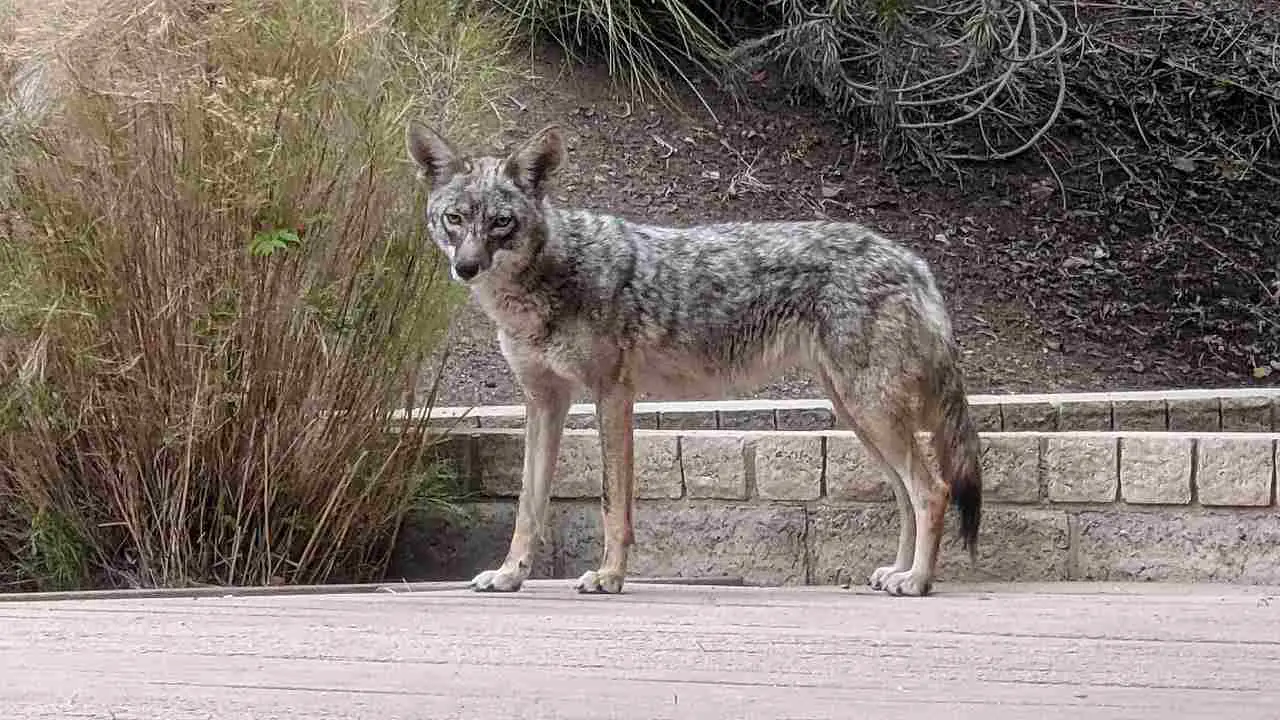
4. What Do Coyotes Eat in the Desert?
In the desert, coyotes have adapted their diet to survive in the harsh environment. They primarily feed on small mammals such as rabbits, mice, and even lizards and snakes. These prey species are abundant in the desert and provide a vital source of food for coyotes.
Additionally, coyotes in the desert may also consume birds that they come across. In terms of plant matter, coyotes have been known to eat cactus fruit and mesquite peas, especially during times when other food sources are scarce. Their ability to adapt their diet to the desert ecosystem is a testament to their resourcefulness and survival skills.
5. Can Coyotes Eat Humans?
While it is technically possible for coyotes to eat humans, it is extremely rare and not a natural behavior for them. Coyotes are opportunistic predators and typically target small organisms such as rodents, rabbits, and birds. They are not known to actively hunt humans as prey.
Coyotes are generally wary of humans and tend to avoid direct contact. However, in rare cases where coyotes have lost their fear of humans or have become habituated to human presence, there have been reports of coyote attacks on humans, particularly in urban areas. These incidents are usually the result of coyotes feeling threatened or defending their territory or young.
It is important to note that such incidents are highly uncommon and should not cause undue alarm. By taking simple precautions such as keeping pets on a leash, securing garbage cans, and not feeding coyotes, the risk of negative interactions between humans and coyotes can be minimized.
6. Why Do Coyotes Eat Dogs?
Coyotes may eat dogs for several reasons. One main reason is that small, sick, or injured dogs left unattended can be seen as an easy meal for coyotes. These vulnerable dogs are easier to catch and overpower, making them a target for hungry coyotes. However, it is important to note that coyotes typically do not target or eat large dogs or dogs that are supervised by their owners.
The behavior of coyotes eating dogs is a result of their natural instinct to hunt and survive. They are opportunistic predators and will take advantage of any available food source. While it can be distressing for dog owners to hear about these incidents, it is crucial to take precautions such as keeping dogs on a leash and supervising them when outside to minimize the risk of encounters with coyotes.
7. Will Coyotes Kill Deer?
Yes, coyotes will kill deer and sometimes eat them. While coyotes primarily prefer small prey, they are opportunistic hunters and will take down larger animals if the opportunity arises. Deer are not the preferred prey for coyotes, but they will target them if they are vulnerable or injured. Coyotes are known to hunt fawns, sick or injured deer, or deer that are weakened during the winter months.
However, it is important to note that coyotes do not typically pose a significant threat to healthy adult deer populations. They are more likely to target smaller mammals such as rabbits, rodents, and birds. Coyotes play a role in maintaining a balanced ecosystem by controlling populations of these smaller prey species.
8. Do Coyotes Eat Small Dogs?
Coyotes are opportunistic hunters and will eat small dogs if given the chance. Small dogs are vulnerable to coyote attacks because they are similar in size to the prey that coyotes typically target, such as rabbits and rodents. Coyotes are known to take advantage of opportunities to hunt and feed on small dogs that are left unattended or are in areas where coyotes are present.
It is important for pet owners to be aware of the potential threat that coyotes pose to small dogs and take precautions to keep their pets safe. This can include keeping dogs on leashes, supervising them when outside, and securing yards with fences to prevent coyote access.
9. What is a Coyote’s Diet?
A coyote’s diet is omnivorous, meaning it consists of both animal and plant matter. They have a diverse range of food sources, including small prey such as rodents, snakes, amphibians, reptiles, and birds. However, coyotes are also capable of taking down larger prey like deer and elk. In addition to meat, they also consume fruits and foliage.
This varied diet allows coyotes to adapt to different environments and take advantage of available food sources. They are opportunistic hunters and scavengers, making use of whatever food is accessible to them. Coyotes play an important role in controlling populations of small mammals and helping to maintain ecosystem balance.
10. How Much Do Coyotes Eat?
Coyotes are opportunistic eaters and will consume food whenever the opportunity arises. However, they require a minimum of 2 pounds of food per day to meet their nutritional needs. Their diet primarily consists of meat from other animals, such as rodents, snakes, birds, and larger prey like deer and elk. Additionally, coyotes may also consume plant matter, adding some variety to their diet.
The amount of food a coyote consumes can vary depending on the availability of prey in their environment. They are adaptable hunters and scavengers, making use of whatever food sources are accessible to them. This flexibility allows them to survive in different habitats and maintain their energy levels.
11. What Do Urban Coyotes Eat?
Urban coyotes have adapted to their surroundings and have a diverse diet that includes rats, mice, squirrels, small pets, lizards, snakes, and birds. The exact dietary composition of urban coyotes can vary depending on the specific urban environment they inhabit.
In urban areas, coyotes have learned to take advantage of the abundance of small mammals and birds that are often found in parks, gardens, and even residential areas. They are skilled hunters and scavengers, making use of whatever food sources are available to them. This adaptability allows urban coyotes to thrive in human-dominated landscapes.
While urban coyotes primarily feed on small prey, they have been known to occasionally target larger animals such as deer or even domestic dogs. However, these instances are relatively rare and are more likely to occur in areas where natural prey is scarce.
12. Will Coyotes Eat a Dead Deer?
Coyotes are opportunistic scavengers and will eat a dead deer if the opportunity arises. They are known to feed on carrion, including carcasses of larger animals like deer. When a deer dies in the wild, whether due to natural causes or predation, coyotes will not hesitate to take advantage of the available food source.
Coyotes have a keen sense of smell and can detect the scent of a dead deer from a distance. They will often gather in groups to feed on the carcass, tearing into the flesh and consuming as much as they can. This behavior is not uncommon for coyotes, as they are adaptable and resourceful when it comes to finding food.
It’s important to note that while coyotes will eat a dead deer, they are not solely reliant on carrion for their diet. They are skilled hunters and will actively pursue live prey when the opportunity presents itself. Coyotes have a diverse diet that includes small mammals, birds, reptiles, and even fruits and vegetables.
13. What Eats a Deer?
Deer are hunted by a variety of predators. One of the predators of deer is the coyote. Coyotes are opportunistic hunters and will target deer, especially fawns, when given the chance. They use their speed, agility, and pack hunting tactics to bring down their prey. Other predators that eat deer include wolves, mountain lions, bears, and bobcats.
These predators play an important role in maintaining the balance of the ecosystem by controlling the deer population. Additionally, scavengers such as vultures and carrion-eating birds will feed on the remains of deer that have been killed by predators or have died from natural causes.
14. Can a Coyote Kill a Dog?
Yes, coyotes are capable of killing dogs, especially smaller breeds. While coyotes generally avoid confrontations with larger dogs, they may attack if they feel threatened or if they are protecting their territory or pups.
It’s important for dog owners to be cautious and take preventive measures to keep their pets safe. This includes keeping dogs on a leash when outside, especially during dawn and dusk when coyotes are most active, and securing the yard with a fence that is at least six feet high. Also, removing attractants such as food and garbage can help deter coyotes from entering residential areas.
15. Which is Faster a Coyote or a Deer?
The speed at which a coyote and a deer can run varies depending on the species. On average, a coyote can reach speeds of about 43 mph. However, the speed of a deer can vary greatly depending on the species. Some deer species can run as slow as 35 mph, while others, like reindeer, can reach speeds as high as 70-80 mph.
When it comes to a direct comparison between a coyote and a deer, it’s difficult to determine which is faster without specifying the species of deer. Generally, deer are known for their agility and ability to outrun predators, including coyotes. However, there are certain deer species that may not be as fast as a coyote.
In the wild, the speed of a deer is an important defense mechanism against predators. Their ability to run quickly allows them to escape from potential threats, including coyotes. Coyotes, on the other hand, rely on their speed and agility to hunt and capture prey, which may include deer.
16. Do Coyotes Eat Foxes?
Coyotes are known to eat foxes in some cases, although it is not a typical part of their diet. While coyotes are opportunistic predators and will eat a variety of small mammals, birds, and even fruits and vegetables, foxes are not a primary food source for them. Coyotes are more likely to prey on smaller animals such as rabbits, rodents, and birds.
However, if the opportunity presents itself, a coyote may hunt and consume a fox. This could occur if a coyote is in need of food and a fox happens to be in its vicinity. It’s important to note that coyotes are adaptable and their diet can vary depending on the availability of prey in their environment. So while it is possible for coyotes to eat foxes, it is not a common occurrence.
17. How Do Coyotes Kill Deer?
Coyotes employ a specific hunting strategy when it comes to deer. They typically attack from the rear end, targeting the hindquarters of the deer. By biting the hindquarters, they aim to take down the deer and potentially disembowel it. Unlike felines, coyotes do not rely on suffocation to kill their prey. Instead, they often eat deer alive.
Coyotes are known for their adaptability and resourcefulness, and their hunting techniques reflect this. They take advantage of the deer’s vulnerability and use their agility and speed to their advantage. By targeting the hindquarters, they can incapacitate the deer and make it easier to bring down.
It’s important to note that coyotes are opportunistic predators and will hunt and consume deer if the opportunity arises. However, deer are not their primary food source. Coyotes typically prey on smaller animals such as rabbits, rodents, and birds. Their diet can vary depending on the availability of prey in their environment.
18. Do Coyotes Eat White-tailed Deer?
Coyotes are known to prey on white-tailed deer, especially targeting young deer that are less than six weeks old. While deer are not their primary food source, coyotes will take advantage of the opportunity to hunt and consume them. White-tailed deer are one of the main prey for coyotes due to their abundance in certain areas.
Coyotes employ their hunting strategies to bring down white-tailed deer. They often attack from the rear end, biting the hindquarters of the deer to incapacitate them. By targeting the vulnerable young deer, coyotes can easily overpower them and make them easier to bring down.
It’s important to note that coyotes are opportunistic predators and their diet can vary depending on the availability of prey in their environment. While they do eat white-tailed deer, they also prey on smaller animals such as rabbits, rodents, and birds. This adaptability allows coyotes to survive and thrive in various habitats.
19. Do Coyotes Eat Deer Antlers?
Coyotes do not typically eat deer antlers. While they may chew on them, their main purpose is to break off bits and carry them away. Deer antlers are primarily composed of bone, which is not a significant part of a coyote’s diet.
Instead, coyotes focus on consuming the meat and organs of their prey, such as white-tailed deer. Antlers are more commonly used by deer for defense, mating rituals, and establishing dominance within their herd. So, while coyotes may interact with deer antlers, they do not consume them as a food source.
20. How Many Fawns Does a Coyote Kill Per Year?
The number of fawns which coyotes kill per year can vary. The exact number depends on various factors, including the coyote population, prey availability, and habitat conditions. In areas with high coyote populations and abundant prey, such as deer, the number of fawns killed can be significant.
Research has shown that coyotes can kill up to 50% or more of fawns in certain areas. This predation can have an impact on deer populations, especially in areas where other factors, such as hunting or disease, also affect fawn survival.
21. Do Coyotes Eat Moose?
Coyotes are known to occasionally prey on moose, but it is not as common as their predation on deer and rodents. Moose are much larger and more formidable than deer, making them a more challenging target for coyotes. However, in certain circumstances, coyotes may resort to pack hunting to take down a moose.
Moose are typically solitary animals and have a strong defense mechanism, including their size and powerful kicks. This makes it difficult for coyotes to successfully hunt and kill a moose on their own. However, in situations where a moose is weakened or injured, such as during the winter or when they are sick, coyotes may take advantage of the opportunity.
22. Do Coyotes Eat Dead Animals?
Coyotes are opportunistic feeders and can indeed eat dead animals. As scavengers, they are equipped to take advantage of any available food source, including carcasses. When a coyote comes across a dead animal, it will not hesitate to scavenge and consume it. This behavior is especially common in times when prey is scarce or during the winter months when food is harder to find.
Coyotes play an important role in the ecosystem by helping to clean up carrion and prevent the spread of disease. They are efficient scavengers and can quickly dispose of carcasses, reducing the risk of contamination.
However, it’s important to note that coyotes mainly rely on hunting live prey for their sustenance. Scavenging is more of a supplement to their diet rather than a primary source of food. They are skilled hunters and will actively pursue small mammals, birds, and even larger prey like deer when given the opportunity.
23. Do Coyotes Eat Cats?
Coyotes have been known to eat cats, but their preference is for small, unprotected cats or those that are sick or injured. Large cats or supervised house cats are less likely to be targeted by coyotes.
Coyotes are opportunistic predators and will take advantage of any available food source, including domestic cats that are easy prey. They are skilled hunters and have adapted to urban environments, where they may encounter cats more frequently.
To protect your cats from coyote predation, it is important to keep them indoors, especially during dawn and dusk when coyotes are most active. Additionally, secure outdoor enclosures or fences can help prevent coyotes from accessing your property and harming your pets.
If you live in an area with a high coyote population, it is crucial to be vigilant and take necessary precautions to ensure the safety of your cats.
24. Do Coyotes Eat Elk?
Yes. coyotes are known to eat elk, especially during the winter when smaller prey may be less available. While coyotes primarily feed on smaller mammals like rabbits and rodents, they are opportunistic hunters and will take advantage of larger prey when the opportunity arises. Elk can provide a substantial food source for coyotes, especially if they are weakened or injured.
During the winter months, when food is scarce, coyotes may intensively hunt elk to sustain themselves. They are skilled predators and can work together in packs to bring down larger animals. However, it’s important to note that coyotes typically target elk that are vulnerable, such as calves or older individuals that are sick or injured.
The ability of coyotes to successfully hunt and consume elk depends on various factors, including the size and health of the elk population, as well as the availability of other food sources. Coyotes are adaptable and will adjust their diet based on what is most readily available in their environment.
25. Are Coyotes Afraid of Dogs?
Coyotes generally have a fear of large dogs and will try to avoid confrontation with them. The presence of a big, intimidating dog can deter coyotes from approaching an area or property. However, it’s important to note that this fear may not extend to small dogs or dogs that are injured or sick.
When it comes to small dogs, coyotes may see them as potential prey rather than a threat. Additionally, injured or sick dogs may be seen as easier targets. Therefore, it’s vital for pet owners to be cautious and take necessary precautions to protect their small or vulnerable dogs from coyote encounters.
26. Can Coyotes Breed With Dogs?
Yes, coyotes and dogs are closely related species, and under certain circumstances, they can interbreed. The resulting offspring are known as “coydogs” or “dogotes.” This hybridization is more likely to occur in areas where coyotes and domestic dogs coexist, such as rural or suburban areas.
The ability of coyotes and dogs to breed is due to their similar genetic makeup and reproductive systems. However, successful breeding between the two species is relatively rare, as there are several barriers to reproduction, including differences in behavior, mating rituals, and reproductive cycles.
When a coyote and a dog do mate, the resulting hybrid offspring can vary in appearance and behavior, depending on the traits inherited from each parent. Coydogs may exhibit physical characteristics and behaviors that are intermediate between coyotes and dogs.
While coyotes and dogs can interbreed, it is generally discouraged and not recommended. Hybridization can lead to genetic dilution and loss of genetic diversity in both species. Additionally, coydogs may possess unpredictable behaviors and may not make suitable pets.
27. Can My Dog Survive a Coyote Attack?
The survival of a dog during a coyote attack depends on the severity of the encounter. Coyotes typically target the hindquarters of their prey and attempt to disembowel them. If the vital organs of the dog are not damaged, there is a chance for survival.
During a coyote attack, it is crucial for dog owners to intervene as quickly as possible to protect their pets. Making loud noises, throwing objects, or using a water hose can help scare off the coyote and prevent further harm to the dog. It is important to remember that coyotes are generally more afraid of humans than dogs, so your presence can be a deterrent.
In severe cases where a dog sustains significant injuries, immediate veterinary attention is necessary. Prompt medical treatment can increase the chances of survival and aid in the recovery process. It is essential to monitor the dog closely after an attack and follow any recommended post-attack care instructions provided by the veterinarian.
28. Are Coyotes Afraid of Big Dogs?
Coyotes are generally afraid of big dogs and will often avoid confrontation unless they feel threatened. Their instinct is to prioritize their own safety and survival, so they tend to steer clear of larger animals that could potentially harm them. This fear of big dogs is rooted in the natural hierarchy of the animal kingdom, where predators assess the risks and benefits of engaging in a fight.
When encountering a coyote, it is important for dog owners to remain vigilant and keep their pets on a leash, especially in areas known to have coyote populations. This precautionary measure helps to minimize the chances of a confrontation and ensures the safety of both the dog and the coyote. Additionally, it is advisable to avoid leaving food or water outside, as this can attract coyotes and increase the likelihood of an encounter.
29. Do Coyotes Eat Dogs or Just Kill Them?
The answer to whether coyotes eat dogs or just kill them depends on various factors. If a coyote is uninterrupted and has the opportunity, it may eat a dog. However, in many cases, coyotes will abandon the dog if they are interrupted or if there are other easier food sources available. Whether a coyote eats a dog or not also depends on the behavioral tendencies of the specific coyote(s) in question.
It is important for dog owners to be aware of the potential threat that coyotes pose and take precautions to protect their pets. Keeping dogs on a leash and supervising them while outside can help minimize the risk of a coyote attack.
30. How Do Coyotes Kill Dogs?
Coyotes have various methods for killing dogs, especially small ones. They typically target vulnerable areas such as the rear, sides, or neck, inflicting severe injuries that can cause the animal to bleed to death. This behavior is a result of the coyote’s natural instinct to hunt and feed on smaller prey.
31. Will a Coyote Attack a 100 Pound Dog?
While it is unlikely for a coyote to attack a 100-pound dog, it is not impossible. Coyotes typically weigh less than 50 pounds, making them less likely to engage in a direct confrontation with a larger dog. However, if a coyote feels threatened or if it is protecting its territory or young, it may be more inclined to attack, regardless of the size of the dog.
It is important for dog owners to be cautious and take preventive measures, such as keeping their dogs on a leash and supervising them when outside. Additionally, securing the perimeter of the yard and removing attractants can help deter coyotes from approaching residential areas.
32. Why Do Coyotes Kill But Not Eat?
The behavior of coyotes killing but not eating their prey is not typical or deliberate. It often occurs in cases of overkill, where they cannot consume all of the prey they have killed. This can happen when there is an abundance of food or when they are inexperienced hunters.
Additionally, coyotes may not eat their kill if they are distracted or chased away by humans or other animals. In these situations, their focus is on survival rather than consuming the prey. This behavior is not common and is not a reflection of their usual feeding habits. Coyotes are opportunistic feeders and will typically consume the prey they kill if given the opportunity.
33. Are Coyotes Dangerous?
Coyotes can be dangerous in certain situations. They have been known to attack livestock, such as chickens and goats, as well as pets like small dogs and cats. While rare, coyote attacks on humans can occur if the coyote feels threatened or cornered. It’s important to remember that coyotes are wild animals and should be treated with caution.
In addition to physical harm, coyotes can also pose a risk of transmitting diseases. One example is rabies, which can be transmitted through bites or scratches. It’s crucial to keep pets up to date on their vaccinations and to avoid contact with wild animals, including coyotes.
To minimize the risk of conflicts with coyotes, it’s recommended to secure garbage cans, remove potential food sources, and keep pets indoors or supervised when outside. By taking these precautions, humans and coyotes can coexist safely.
34. What is a Coyote in the Desert?
In the desert, a coyote plays a crucial role as a secondary consumer in the ecosystem. They contribute to the energy transfer dynamics by preying on primary consumers like jackrabbits, helping to control their population. However, coyotes themselves may also fall prey to larger predators like cougars.
Coyotes in the desert have adapted to survive in harsh conditions. They have developed efficient hunting strategies and can go for long periods without water. Their diet consists of a variety of food sources, including small mammals, birds, reptiles, and even insects. They are also known to scavenge on carrion when food is scarce.
35. What is a Coyote’s Diet?
A coyote’s diet is incredibly diverse, making them highly adaptable predators. They are omnivorous, meaning they eat both plant and animal matter. Their diet includes a wide range of food sources, from small prey like rodents and rabbits to larger prey like deer and elk.
Coyotes are opportunistic hunters and scavengers, so they will also consume carrion and feed on fruits and berries when available. Additionally, they may eat some kinds of foliage, such as grasses and leaves. This varied diet allows coyotes to survive in different environments, including the desert, where they can find a variety of food sources to sustain themselves.
36. Do Coyotes Eat the Whole Animal?
The extent to which coyotes eat the whole animal depends on several factors, including the size of the animal, the feeding capacity of the coyote, and the presence or absence of other animals in the surroundings. Generally, coyotes will attempt to consume the entire animal, starting from the abdominal area or rib cage. However, the degree to which they consume the animal can vary.
In some cases, coyotes may completely consume the entire animal, leaving no trace behind. This is more likely to occur when the coyote is hungry and there are no other competing predators or scavengers in the area. However, in other situations, coyotes may only partially consume the animal, leaving behind certain parts or carcass remnants. This can happen if the coyote is unable to finish the entire animal due to its size or if it is interrupted by other animals or external factors.
Overall, the extent to which coyotes eat the whole animal can vary depending on the specific circumstances and conditions. Their feeding behavior is influenced by a combination of factors, including their own feeding capacity, the size of the prey, and the presence of other animals in the area.
37. How do Coyotes Survive in the Desert?
Coyotes have developed various strategies to survive in the harsh desert environment. One key adaptation is their choice of habitat. They often live in dens, which can be burrows, hollows in rocks, or other enclosures. These dens provide shelter and protection from the extreme climate conditions of the desert.
In addition to finding suitable shelter, coyotes also use camouflage to their advantage. Their fur color blends in with the desert landscape, allowing them to avoid detection by larger predators and stalk their prey more effectively.
Another important factor in their survival is their ability to thrive with low water requirements. Coyotes have efficient water conservation mechanisms in their kidneys and renal systems, allowing them to extract and retain water from their food and the limited water sources available in the desert.
Furthermore, coyotes have developed a migrant behavior to evade the harshest conditions of the desert. They may move to different areas in search of food and water, adapting to the changing resources and avoiding areas that become too inhospitable.
38. Where Do Coyotes Live?
Coyotes are highly adaptable animals that can be found in a variety of habitats, including deserts, grasslands, forests, and wetlands. They have a wide distribution across North and Central America, and their ability to thrive in different environments is a testament to their resilience.
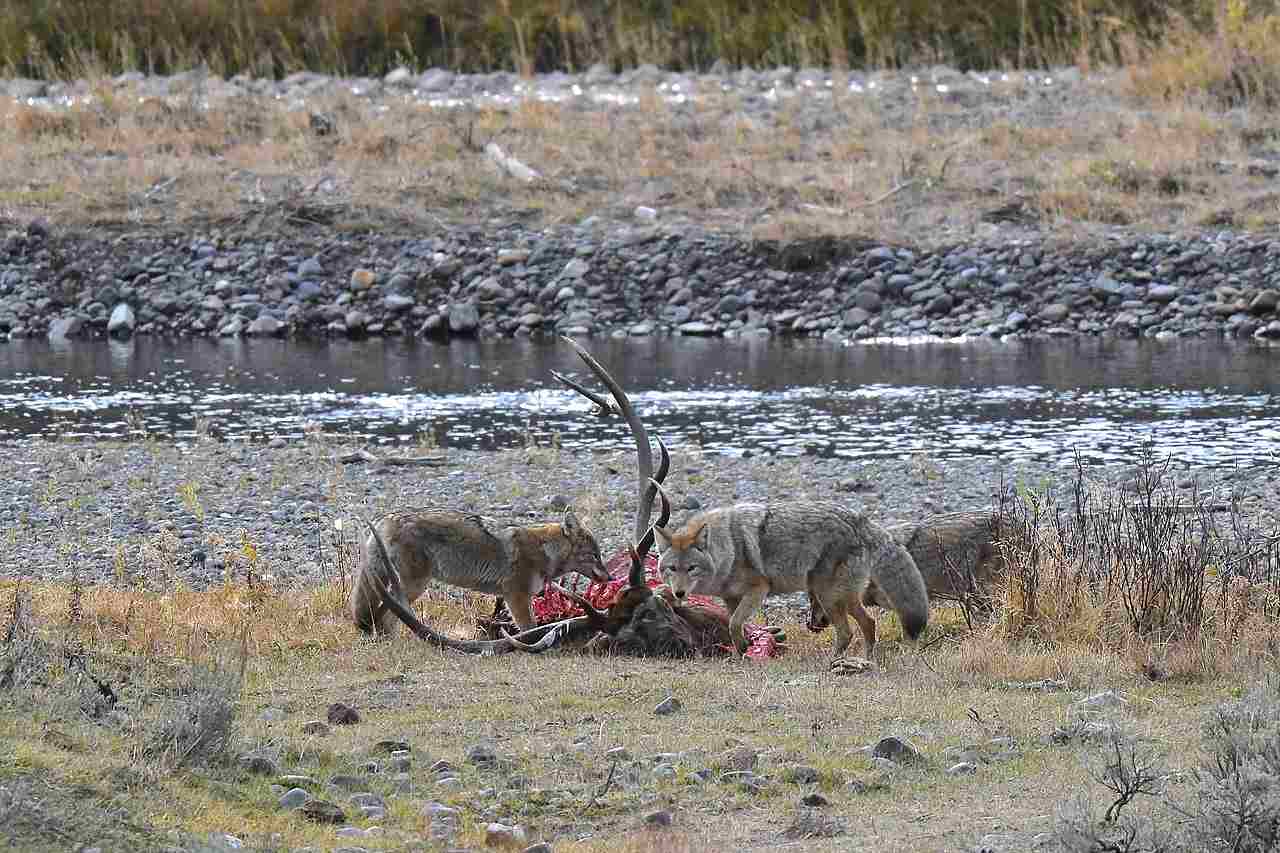
In deserts, coyotes have developed specific survival strategies to cope with the extreme conditions. They seek shelter in dens, such as burrows or hollows in rocks, to escape the scorching heat. Their fur color blends in with the desert landscape, providing camouflage and allowing them to move stealthily.
In grasslands, coyotes take advantage of the open spaces to hunt their prey, which often includes small mammals and birds. Forested areas provide cover and protection, allowing coyotes to navigate through the dense vegetation and find food sources like rodents and deer.
Wetlands offer a diverse range of food options for coyotes, including fish, amphibians, and waterfowl. These areas also provide ample water sources, which are essential for their survival.
